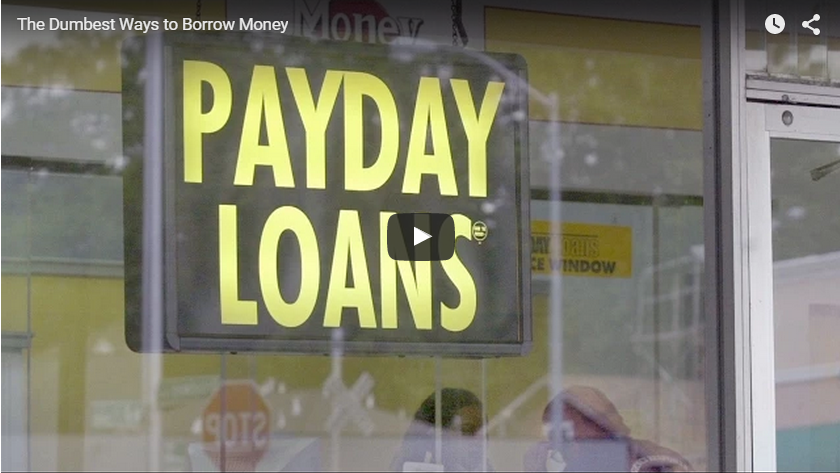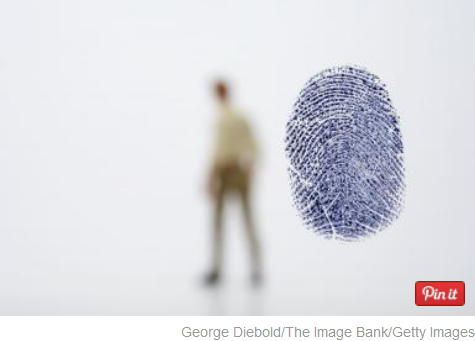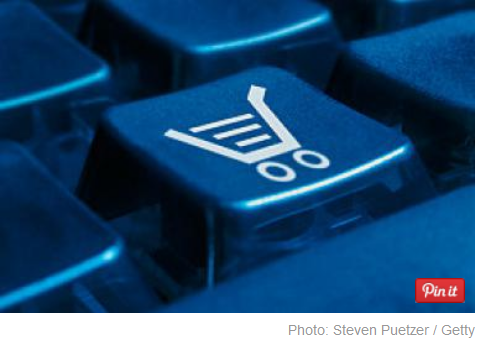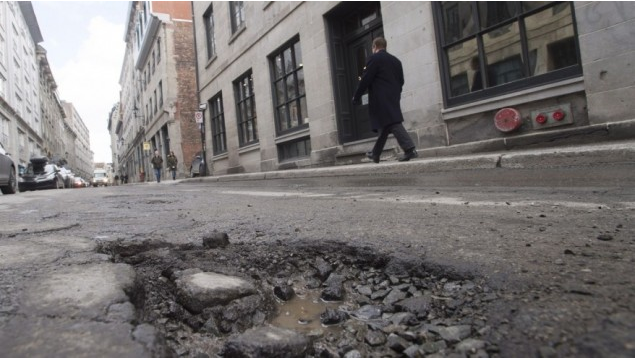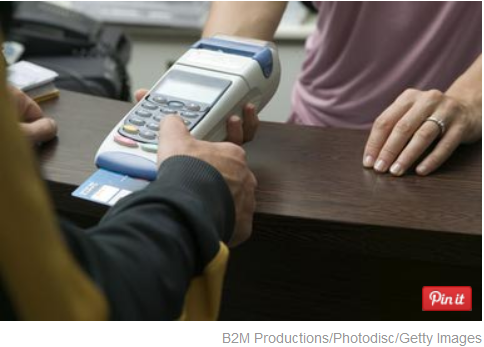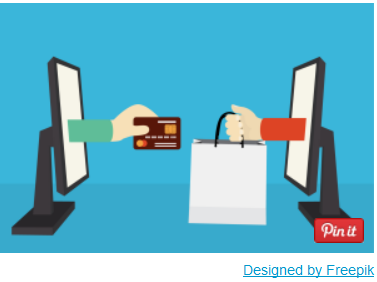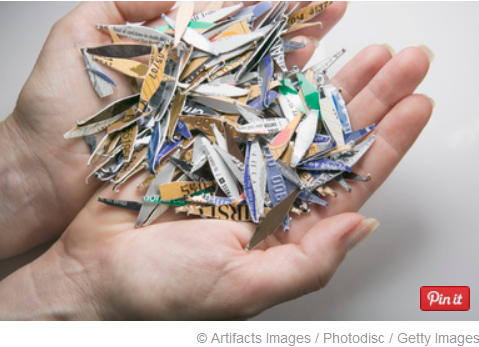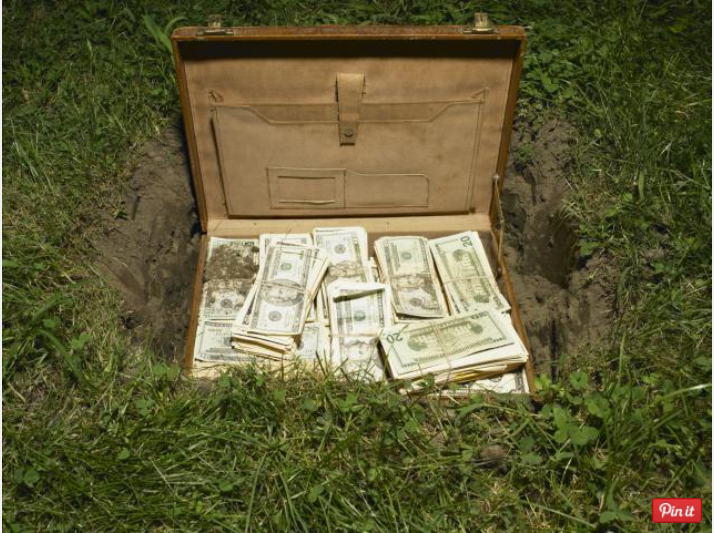Of all the ways to waste money, giving it to high-interest lenders, pawnbrokers and loan sharks is one of the worst. At least when you gamble, you get some entertainment. With a high-interest loan, you just shovel money — and lots of it — into someone else’s hands.
Some of the worst loans possible:
1. Payday loans
Payday loans have a bad name. Here’s why: The finance charge can run $10 to $30 for every $100 you borrow. That’s an APR of nearly 400 percent. That makes even credit card interest rates — usually between 12 percent and 30 percent — look good.
From our Solutions Center: Get a great rate on a personal loan with peer-to-peer lending
Payday loans (or “cash advances”) are small, high-interest loans repaid from your paycheck. Typically you borrow $500 or less.
You may have to give the lender access to your checking account or write a check for the full loan amount for use in case you miss a payment.
Payday loans typically are due in full from your next paycheck. Some, though — for bigger fees — offer interest-only payments (or “renewals” or “rollovers”) or may be repaid in installments over time. The Consumer Financial Protection Bureau has a detailed description.
Payday loans can get borrowers into deep trouble. “If you roll over the loan multiple times it’s possible to pay several hundred dollars in fees and still owe the amount you borrowed,” says the CFPB, in a warning about rollovers. Some states ban rollovers.
2. Car title loans
With these short-term, high-cost loans, you hand over the title to your car, truck, motorcycle or other vehicle and pay a fee, sometimes up to 25 percent of the loan (or $25 in fees for every $100 you borrow). For example, if you borrow $1,000 for 30 days at 25 percent, you’d owe $1,250 at the end of the month, or $250 in costs. A 300 percent APR is not uncommon for a car-title loan.
You often have 30 days to repay. If not, the lender takes the vehicle. That happens less than you’d think, according to researchers at Vanderbilt University.
But the bigger danger is that you’ll underestimate the real costs. “[R]esearch shows that most title loan customers are overly optimistic that they will pay back their loans on time, which means the loan ends up costing them much more than they believe it will when they first receive it,” the researchers say.
Consumer.gov offers more information on how car-title loans work.
3. ‘Buy Here Pay Here’ Car Dealerships
“Buy here pay here” is used to describe car dealers that charge high-interest loans to borrowers who can’t qualify for regular car loans. “Bad credit? You can still get a car,” an ad might say.
“Many of the lots require customers to return once or twice a month to make loan payments in cash — hence the term Buy Here Pay Here,” writes the Los Angeles Times.
Also, subprime dealers often outfit vehicles with “starter-interrupt” devices that use a GPS locator to track the car and shut off the engine if the borrower is behind on payments. The devices are supposed to disable only stopped cars, but The New York Times quotes a woman who says her car was shut down as she drove on the freeway. The Times say:
Some borrowers say their cars were disabled when they were only a few days behind on their payments, leaving them stranded in dangerous neighborhoods. Others said their cars were shut down while idling at stoplights. Some described how they could not take their children to school or to doctor’s appointments.
4. Credit card cash advances
Turning to your credit card for cash will cost you. Your credit card company may send you checks in the mail or let you use the card to make a bank withdrawal or to get cash at an ATM. The fees start immediately. You’ll pay:
A one-time charge of 3 percent to 5 percent just for using the card to borrow money.
Interest rates run around 25 percent on major bank cards, says LowCards.com.
Interest accrues immediately, unlike the 30-day grace period with credit-card purchases.
Use a card cash loan in an emergency only and repay it immediately.
5. Bank loan on your direct deposit salary
Don’t be fooled if your bank offers to make a loan based on your salary direct-deposit. It’s just another form of payday lending, says CreditCards.com, and you already know what a black hole a payday loan can be. APRs on direct-deposit loans (also called “direct-deposit advances”) can run 300 percent or more.
6. Pawn shops
Pawn shops will loan you money in exchange for receiving certain valuables as collateral. The amount you can borrow is based on the value of your collateral. “On average, customers receive only a portion of the item’s retail value,” says the National Pawnbrokers Association. If you don’t repay the loan, the shop keeps your goods.
Pawning is an expensive way to borrow money for two reasons: high interest rates and high fees.
Depending on what the state allows, pawn shop interest rates can be as high as 25 percent, says Fox Business. Even if the interest rate sounds low, be sure you know all of the fees involved. For example you may be asked to pay a storage fee, a ticket fee and an additional fee if you lose your receipt.
Ask yourself if you might just be willing instead to part with your treasures permanently. If so, you’ll make more money on eBay.
Please read the post in MoneyTalkNews

